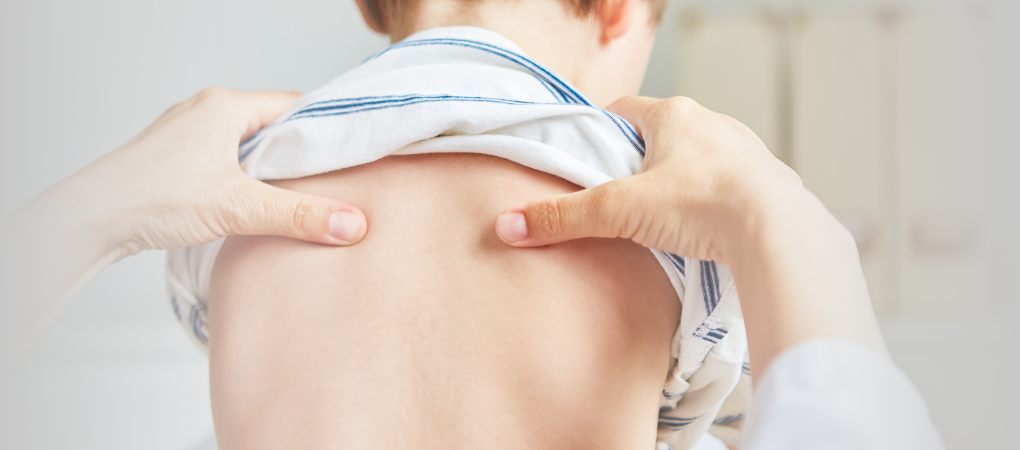Francesca Galiano
|
23/06/2022 - Last update 30/12/2022
di Joanna L. Kramer, Kathleen De Asis | Year 2021
Osteopathic interventions via telehealth in a pediatric population, a retrospective case series
Scope:
Pain in paediatric population
Type of study:
Retrospective case series
Date of publication of the study’:
2021/Aug/19

Purpose of the study
- Objective: to report the experience of an osteopathic pediatrician in teaching, through telehealth, simplified techniques of OMT to parents (or caregivers) to be performed on children
- Measured outcomes:
- Primary: pain
- Secondary: adverse effects and patients’ satisfaction
Participants
- Number: 18 people
- Criteria of inclusion: families with children or teenagers which decided to convert their appointment into a telehealth visit and that were followed by a specific osteopathic pediatrician
- Group of study: only one group
- Group 1: 18 people (12 girls and 6 boys, with an average age of 13.6 years, ranging from 6 months to 19 years)
Interventions and evaluations
- A total 54 30-minutes visits utilizing telehealth (3 on average, ranging from 1 to 9)
- During these visits, the parents (or caregivers) performed simplified techniques of osteopathy that the osteopathic pediatrician, over a video platform, verbally described and practically demonstrated (also with the help of some of his students). The pediatrician gave instructions on how to position patients, position hands, perceive palpatory changes and perform the techniques
- Pain evaluation using the Wong-Baker FACES scale for children/young people over 3 years old
- The satisfaction of parents or caregivers was collected through anonymous questionnaire completed on a voluntary basis
Results
- Primary outcomes: post-treatment pain (2.57±2.58) was lower than pre-treatment pain (6.77±2.07) in a statistically significant way. The decrease of the pain using telehealth (4.20±3.42) was comparable to that obtained in those same patients in their last visits in person (3.32±2.61).
The following simplified techniques of OMT were used:
-
- in the 29.7% of cases, inhibition techniques
- in the 28.8%, soft tissues techniques
- in the 17.7%, counterstrain techniques
- in the 14.3%, myofascial release techniques
- in the 5.9%, muscle energy techniques
- in the 2.7%, articulatory technique
- in the 0.9%, ligamentous tension balancing techniques
The following localized pains were treated with the above techniques:
-
- in the 26.3% of cases, back pain
- in the 23.7%, neck pain
- in the 14.4%, headache
- in the 13.6%, arm pain
- in the 12.7%, legs pain
- in the 5.9%, abdominal pain
- in the 2.5%, hip pain
- in the 0.8%, rib pain
- Secondary outcomes: no serious adverse effects have been reported. Only 4 people during 5 of the 54 visits reported a slight worsening of the pain during the visits, which was resolved on the same day of the visit in all cases. 5 satisfaction questionnaires were completed and reported a greater confidence in the use of osteopathic techniques by parents or caregivers, although preference was given to having in-person appointments rather than telehealth visits.
Discussion
Tele-“osteopathy” has proved to be able to improve pain perception in the pediatric population. Specifically, the study showed that for an osteopath it is possible to direct parents to perform simple techniques on their children, without having adverse effects and, indeed, having excellent results.
The reported adverse effects were greater than those reported during the visits in person (9.3% vs 2.5%), but this may be due to the incorrect execution of a technique. However, the fact that all the adverse effects have been resolved over the course of the day goes, in any case, in favor of telehealth. In the evaluation questionnaires, the families particularly appreciated the possibility of following the treatment in a safe way (that is, avoiding the risk of infection from Covid-19). In this regard, it is interesting how one of the families has expressed the intention to continue telehealth visits instead of in-person visits.
In a very pragmatic way, exploiting telehealth not only allows patients to be consistently followed, but also allows therapists to work (and thus receive a salary) in situations in which, like during the pandemic, working in person is not possible.
The review of Osteopedia
By Marco Chiera
Strengths: the study shows how simple osteopathic techniques can be taught remotely, so that patients can use them as needed and take better care of themselves or their loved ones. This also prevents people from not receiving proper treatments or from being late in receiving them when they are unable to go to the osteopath, due to hunforeseen circumstances, sickness or as it happened during the pandemic.
In situations where the osteopath cannot directly treat patients, knowing that certain techniques can be taught at a distance is a fundamental resource, especially today that technology allows us to reach every place (or almost) and that technology itself is developing more and more. Suffice to think of the development of virtual reality and the implementation of virtual therapists who assist people in their care: this phenomenon, which for years has been the preserve of psychology, becomes, with studies like this, something that can also involve disciplines such as osteopathy. Conversely, this study shows how technological evolution can be fundamental to teaching.
Limits:it is not specified how adverse effects were defined and collected; the satisfaction questionnaire, having been completed only on a voluntary basis, lends itself to bias (e.g. only satisfied people filled it in); only families that had known about osteopathy for a long time and could therefore already have positive expectations (placebo effect) were involved. In addition, the small sample prevents a generalization of the results.

Are you an osteopath?
Register and enjoy the membership benefits. Create your public profile and publish your studies. It's free!
Register now
School or training institution?
Register and enjoy the membership benefits. Create your public profile and publish your studies. It's free!
Register now
Do you want to become an osteopath? Are you a student?
Register and enjoy the membership benefits. Create your public profile and publish your studies. It's free!
Register now







